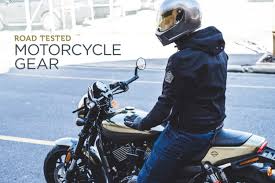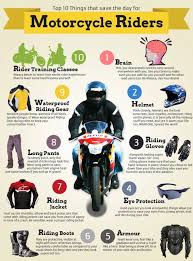Essential Protective Gear for Safe Dirt Bike Riding Adventures

Protective Gear for Dirt Bike Riding
Riding a dirt bike can be an exhilarating experience, but it also comes with its risks. To ensure your safety and reduce the chances of injury, wearing the right protective gear is essential. Here are some key pieces of protective equipment every dirt bike rider should have:
Helmet
A helmet is the most important piece of protective gear for any rider. It protects your head in case of a fall or collision, reducing the risk of serious head injuries.
Goggles
Goggles are essential for protecting your eyes from dust, debris, and other particles while riding off-road. They also provide clear vision, especially in challenging terrain.
Gloves
Durable gloves with proper grip not only protect your hands from blisters and cuts but also improve your control and handling of the bike.
Boots
Sturdy boots with ankle support are crucial for protecting your feet and ankles from impacts and injuries while riding over rough terrain.
Body Armour
Body armour such as chest protectors, elbow pads, and knee guards offer additional protection to vital body parts in case of falls or crashes.
Riding Pants and Jersey
Durable riding pants and jerseys made from abrasion-resistant materials provide added protection against scrapes, cuts, and bruises.
Remember that wearing protective gear is not just about following rules; it’s about prioritizing your safety and well-being on the trails. Invest in high-quality gear that fits properly and meets safety standards to enjoy a safe and thrilling dirt bike riding experience!
9 Key Benefits of Wearing Protective Gear for Dirt Bike Riding
- 1. Enhances safety by reducing the risk of head injuries with a helmet.
- 2. Protects eyes from dust and debris with goggles, ensuring clear vision.
- 3. Prevents hand injuries such as blisters and cuts with durable gloves.
- 4. Offers ankle support and protects feet from impacts with sturdy boots.
- 5. Provides additional protection to vital body parts with body armour like chest protectors and knee guards.
- 6. Reduces the risk of scrapes, cuts, and bruises with abrasion-resistant riding pants and jerseys.
- 7. Improves control and handling of the bike with gloves that offer proper grip.
- 8. Ensures comfort during rides by wearing gear that fits properly and is made from breathable materials.
- 9. Boosts confidence while riding off-road knowing you are well-protected against potential risks.
Challenges of Using Protective Gear for Dirt Bike Riding
- Can be expensive to purchase high-quality gear
- Some gear may feel bulky and restrict movement
- Gear needs to be regularly cleaned and maintained for optimal performance
- Finding the right size and fit can be challenging
- Heat and discomfort in hot weather conditions
- Additional time needed to put on and take off all the gear before and after riding
1. Enhances safety by reducing the risk of head injuries with a helmet.
Wearing a helmet while dirt bike riding significantly enhances safety by reducing the risk of head injuries. Helmets are designed to protect the rider’s head in case of falls, collisions, or any impact during off-road adventures. By providing a cushioning layer and sturdy outer shell, helmets absorb and distribute the force of impact, thus safeguarding the rider’s head from potentially severe injuries. Investing in a quality helmet is crucial for every dirt bike enthusiast, as it not only ensures a safer riding experience but also promotes responsible and proactive measures towards personal safety on the trails.
2. Protects eyes from dust and debris with goggles, ensuring clear vision.
One significant advantage of wearing protective gear for dirt bike riding is the protection it offers to the eyes. Goggles play a crucial role in safeguarding the rider’s eyes from dust, debris, and other particles encountered while riding off-road. By providing a barrier against these elements, goggles ensure clear vision for the rider, allowing them to navigate challenging terrain with confidence and precision. This not only enhances safety but also contributes to a more enjoyable and focused riding experience.
3. Prevents hand injuries such as blisters and cuts with durable gloves.
Durable gloves worn as part of protective gear for dirt bike riding play a crucial role in preventing hand injuries such as blisters and cuts. The rugged material and reinforced design of these gloves provide a protective barrier between the rider’s hands and the rough terrain, reducing the risk of abrasions and injuries during off-road adventures. By investing in high-quality gloves, riders can enjoy a more comfortable and safer riding experience, ensuring their hands remain well-protected throughout their dirt bike journeys.
4. Offers ankle support and protects feet from impacts with sturdy boots.
One significant benefit of wearing protective gear for dirt bike riding is the ankle support and foot protection provided by sturdy boots. These specially designed boots offer crucial stability and cushioning to the ankles, reducing the risk of injuries during challenging off-road rides. By shielding the feet from impacts and providing a secure fit, these boots ensure that riders can navigate rough terrains with confidence and comfort, enhancing both safety and performance on the trails.
5. Provides additional protection to vital body parts with body armour like chest protectors and knee guards.
One significant advantage of wearing protective gear, such as body armour like chest protectors and knee guards, is the added protection it offers to crucial body parts. In the event of a fall or collision while dirt bike riding, these pieces of equipment act as a shield for vulnerable areas, reducing the risk of serious injuries to the chest and knees. By investing in quality body armour that fits properly and meets safety standards, riders can enjoy peace of mind knowing that their vital body parts are well-protected during their off-road adventures.
6. Reduces the risk of scrapes, cuts, and bruises with abrasion-resistant riding pants and jerseys.
One significant advantage of wearing protective gear for dirt bike riding is the reduction in the risk of scrapes, cuts, and bruises. Abrasion-resistant riding pants and jerseys act as a barrier between the rider’s skin and rough terrain, minimizing the impact of falls or collisions. By investing in high-quality gear designed to withstand abrasion, riders can enjoy added protection against minor injuries, allowing them to focus on their ride with confidence and peace of mind.
7. Improves control and handling of the bike with gloves that offer proper grip.
Wearing gloves that offer proper grip while dirt bike riding not only enhances safety but also significantly improves control and handling of the bike. The tactile grip provided by quality gloves allows riders to maintain a firm hold on the handlebars, especially in challenging terrain or adverse weather conditions. This improved grip translates to better maneuverability, smoother operation of controls, and overall enhanced riding experience. By ensuring a secure connection between the rider and the bike, gloves play a crucial role in promoting rider confidence and control, ultimately contributing to a safer and more enjoyable dirt biking adventure.
8. Ensures comfort during rides by wearing gear that fits properly and is made from breathable materials.
Ensuring comfort during rides is a crucial benefit of wearing protective gear for dirt bike riding. By choosing gear that fits properly and is made from breathable materials, riders can experience enhanced comfort throughout their journeys. Properly fitting gear prevents chafing and discomfort, while breathable materials help regulate body temperature and keep riders cool and dry, even during intense rides in challenging terrain. This not only improves overall comfort but also allows riders to focus on the thrill of the ride without distractions, enhancing their riding experience.
9. Boosts confidence while riding off-road knowing you are well-protected against potential risks.
Wearing proper protective gear while dirt bike riding not only enhances safety but also boosts confidence on off-road trails. Knowing that you are well-equipped and protected against potential risks allows riders to focus on enjoying the ride without worrying about injuries. This increased sense of security and protection instils a greater level of confidence, enabling riders to push their limits and explore challenging terrains with peace of mind. Ultimately, investing in quality protective gear not only safeguards against accidents but also empowers riders to ride with confidence and enthusiasm in the exhilarating world of dirt biking.
Can be expensive to purchase high-quality gear
One significant drawback of protective gear for dirt bike riding is the cost associated with purchasing high-quality gear. Investing in top-notch helmets, goggles, gloves, boots, body armour, and riding apparel can be expensive. While quality gear offers superior protection and durability, the upfront cost may deter some riders from ensuring their safety on the trails. However, it’s crucial to consider the long-term benefits of investing in reliable protective equipment to prevent serious injuries and enjoy a safer riding experience in the long run.
Some gear may feel bulky and restrict movement
While protective gear is crucial for ensuring safety while dirt bike riding, one notable downside is that some gear may feel bulky and restrict movement. The added layers of protection can sometimes limit the rider’s flexibility and agility, potentially affecting their performance on the bike. Finding a balance between adequate protection and freedom of movement is essential to ensure comfort and optimal riding experience. Riders should carefully choose gear that offers both protection and flexibility to maintain safety without compromising their ability to manoeuvre effectively on challenging terrain.
Gear needs to be regularly cleaned and maintained for optimal performance
One downside of using protective gear for dirt bike riding is the necessity for regular cleaning and maintenance to ensure optimal performance. Dirt, mud, and sweat can accumulate on gear over time, affecting its effectiveness and comfort. Neglecting to clean and maintain gear can lead to decreased durability, compromised protection, and discomfort during rides. Regular upkeep is essential to prolong the lifespan of the gear and ensure that it continues to provide the necessary protection for safe riding experiences.
Finding the right size and fit can be challenging
When it comes to protective gear for dirt bike riding, one significant drawback is the challenge of finding the right size and fit. Riders often face difficulties in selecting gear that fits them properly, as each individual has unique body proportions and preferences. Ill-fitting gear can compromise safety and comfort, leading to potential distractions while riding. It is crucial for riders to invest time and effort in trying out different sizes and styles to ensure that they find gear that offers maximum protection without hindering their mobility on the trails.
Heat and discomfort in hot weather conditions
Riding a dirt bike in hot weather conditions can pose a challenge when it comes to wearing protective gear. The heat and discomfort caused by wearing layers of gear, especially helmets, body armour, and riding pants, can be overwhelming. Riders may experience excessive sweating, dehydration, and reduced comfort levels during extended rides in high temperatures. Balancing the need for protection with the need to stay cool and comfortable becomes crucial in such conditions. Proper ventilation and moisture-wicking materials in protective gear can help alleviate some of the heat-related issues faced by dirt bike riders in hot weather, ensuring both safety and comfort on the trails.
Additional time needed to put on and take off all the gear before and after riding
One drawback of wearing protective gear for dirt bike riding is the additional time required to put on and take off all the gear before and after each ride. The process of gearing up with helmets, goggles, gloves, boots, body armour, and riding apparel can be time-consuming, especially when compared to simply hopping on a bike without any gear. This extra time spent gearing up may feel inconvenient for some riders who are eager to hit the trails quickly. However, it’s important to remember that this minor inconvenience is a small price to pay for the crucial protection that these gears provide against potential injuries and accidents while riding off-road.









